A client once told me his trailer was stolen overnight from a job site. I asked what kind of lock he used. “Just the standard pin,” he said.
That conversation stuck with me. I’ve made sure never to rely on the bare minimum.
I’ve worked with trailers for years and tested several lock systems myself. What I’m sharing here is based on what has held up, not what looks good in theory.
This article explains how to lock your gooseneck trailer properly, with clear steps and practical options. If you want your gear secure, this guide is worth your time.
So let’s dive in!
Step #1: Choose a Safe Parking Spot
Parking isn’t just about convenience. A visible, high-traffic spot adds pressure on anyone thinking about messing with your trailer. It’s your first, most passive line of defense.
How to Do It Right
- Pick a well-lit, open location. Whether it’s a jobsite or storage yard, make sure the trailer is in plain sight, near people, cameras, or foot traffic.
- Block access to the gooseneck. Park nose-in to a building, fence, or another vehicle so no one can easily hitch up and roll out.
- Use locked gates if available. Bonus points if the spot has a keypad, monitored gate, or security patrol.
- Don’t park the same way every time. Predictable patterns are easier for thieves to plan around.
- Consider natural surveillance. Parking near windows or active zones where people are often present can reduce risk significantly.
Common Mistakes to Avoid
- Parking near trees or blind spots “just for the shade”
- Leaving trailers behind buildings or fences without visual exposure
- Assuming locks alone make any spot safe
A good parking spot won’t guarantee safety, but it can make your trailer a much harder target. And when you’re hauling valuable gear, that’s a smart move every time.

Step #2: Use a Gooseneck Coupler Lock
The gooseneck coupler is the most obvious place for someone to attempt a theft. If it’s easy to access and unsecured, all it takes is the right-sized ball and they’re off with your trailer. A heavy-duty coupler lock blocks that opportunity completely.
How to Do It Right
- Invest in a high-grade steel lock. Look for thick, solid steel construction—not lightweight aluminum. Models from Proven Industries or Blaylock tend to hold up well under stress.
- Match the lock to your coupler. Gooseneck couplers vary in shape and size. Double-check compatibility to get a tight, secure fit.
- Lock it every time you park. Even if you’re only stepping away for lunch, make locking part of your regular habit.
- Consider a keyed-alike system. If you’re managing multiple trailers or locks, streamline things with one key to simplify your daily workflow.
- Store an extra coupler lock. If the lock malfunctions or gets damaged, you’re not left with an unsecured trailer.
Common Mistakes to Avoid
- Buying the cheapest lock available thinking they all do the same job
- Failing to secure the coupler just because the trailer is parked in a familiar area
- Using a lock that doesn’t fully block the hitch opening
A solid coupler lock is one of the best theft deterrents you can use. If it looks tough and actually is tough, most thieves won’t even bother trying.
Step #3: Secure the Safety Chains and Breakaway Cable
Safety chains and breakaway cables are often overlooked as security threats. But they can be exploited if they’re not locked or hidden. A thief might not be able to hitch up immediately, but dragging a trailer a few feet can buy them enough time to move it somewhere less visible.
How to Do It Right
- Lock the chains to the frame. Use a padlock or heavy-duty cable to keep them secured and immobile when not in use.
- Bundle chains tightly. Wrap them around the trailer tongue or frame rails and secure them out of sight.
- Use a chain lock box. If your trailer has one, store the chains inside when not in use.
- Tuck or loop the breakaway cable. Avoid leaving it hanging. Run it through the coupler lock or store it in a lockable box on the trailer.
Common Mistakes to Avoid
- Leaving chains dangling below the coupler or dragging on the ground
- Letting the breakaway cable remain exposed and accessible
- Using zip ties instead of real locks to hold chains
Securing these small parts might not seem like much, but when combined with other methods, they build real resistance into your setup.
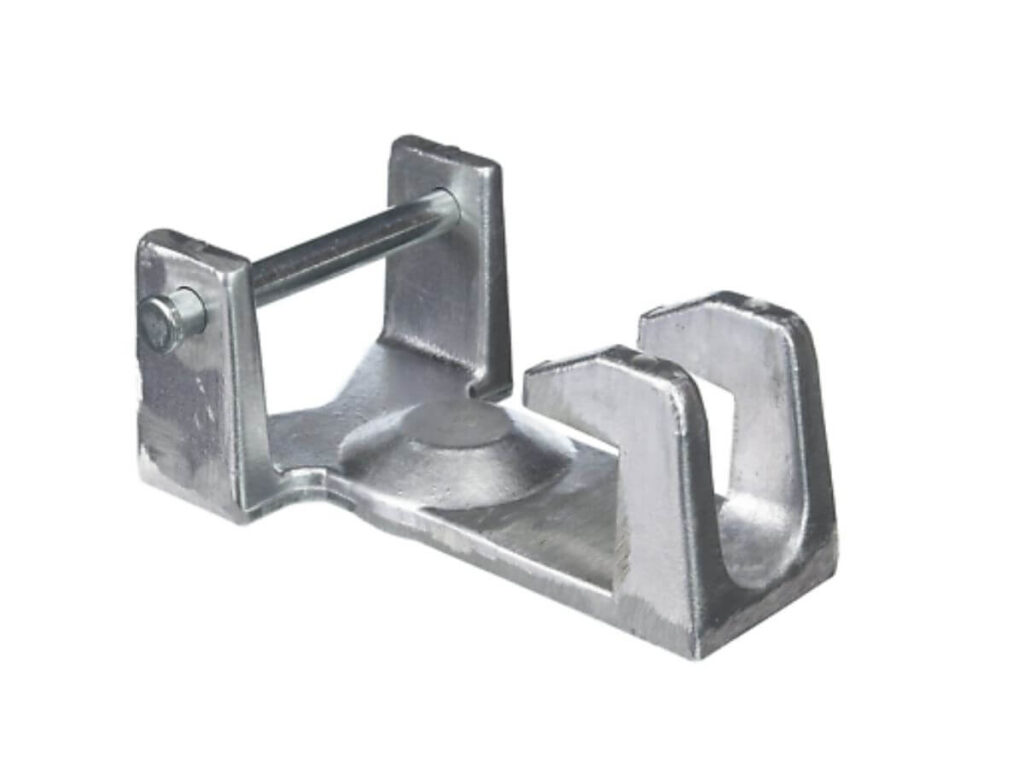
Step #4: Add a Wheel Lock or Chock Lock
After locking down the coupler and chaining the trailer to a post, I still lost a unit. The thief didn’t go through the hitch—they just jacked up the tongue and wheeled it off with a dolly. That’s when I started using wheel locks.
If a thief can’t hook up to your gooseneck, they might try to move it another way. Wheel locks and chock locks physically prevent the trailer from rolling, adding one more obstacle they have to overcome.
How to Do It Right
- Use a heavy-duty wheel clamp. Go for one with a thick steel build and tamper-resistant locking mechanisms.
- Check tire size compatibility. Not all wheel locks fit large or wide trailer tires, so make sure yours does.
- Use locking chocks as backup. They add stability and theft resistance in one tool.
- Rotate wheel locks between tires. This spreads out wear and helps identify any mechanical issues early.
Common Mistakes to Avoid
- Using cheap locks with plastic components
- Forgetting to lock both sides if the trailer has tandem axles
- Assuming the trailer is too heavy to roll manually (thieves get creative)
Wheel locks take only a minute to install but can stop an entire theft attempt. They’re one of the most underrated tools in your trailer security plan.
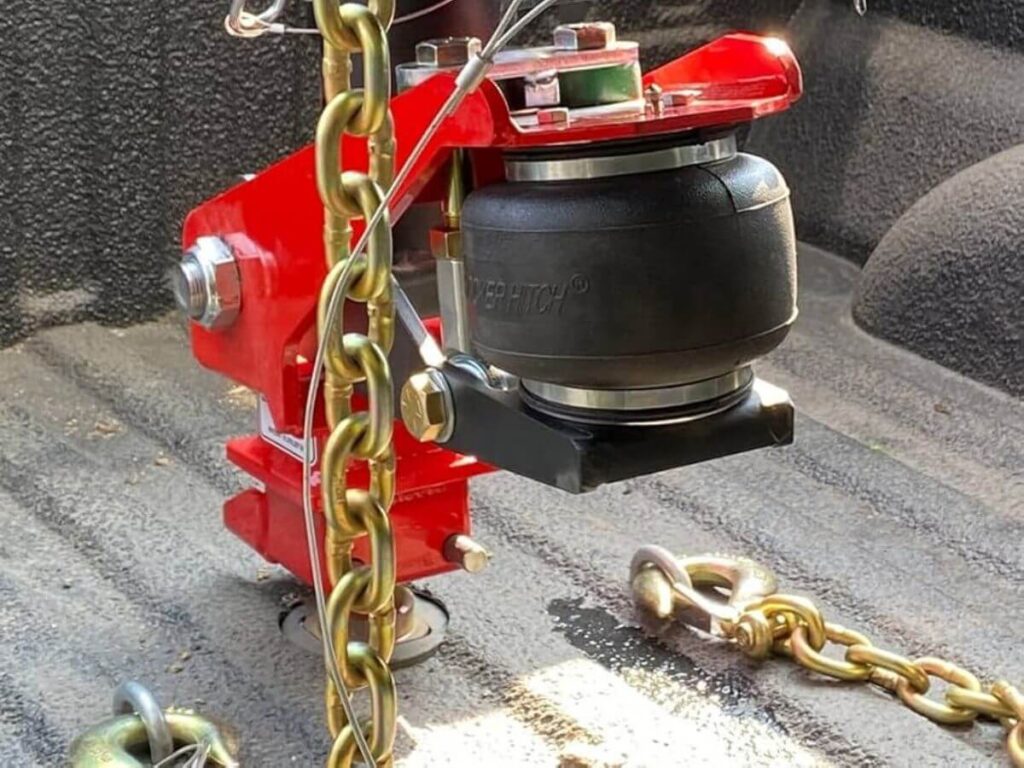
Step #5: Install a Hitch Lock If Connected to Your Truck
When your trailer is hitched to your truck, it might seem secure, but it’s actually vulnerable. A thief could back up another vehicle, unhook the trailer, and tow it off before you even realize what’s happening.
How to Do It Right
- Use a hitch lock with a solid design. Models like BOLT or Reese Towpower offer solid steel construction with keyed access.
- Install a pin lock or latch lock. These small but strong devices prevent the hitch latch from opening.
- Combine with a coupler lock. Even when connected to your truck, layering locks makes theft harder.
- Choose a keyed system that matches your truck key. That way, you don’t fumble with multiple keys during stops.
Common Mistakes to Avoid
- Leaving the hitch completely unlocked when parked “just for a minute”
- Using flimsy locks that are easy to snap or pick
- Relying on your presence alone to protect the trailer
A hitch lock buys you time—and sometimes that’s all it takes to prevent a theft attempt.
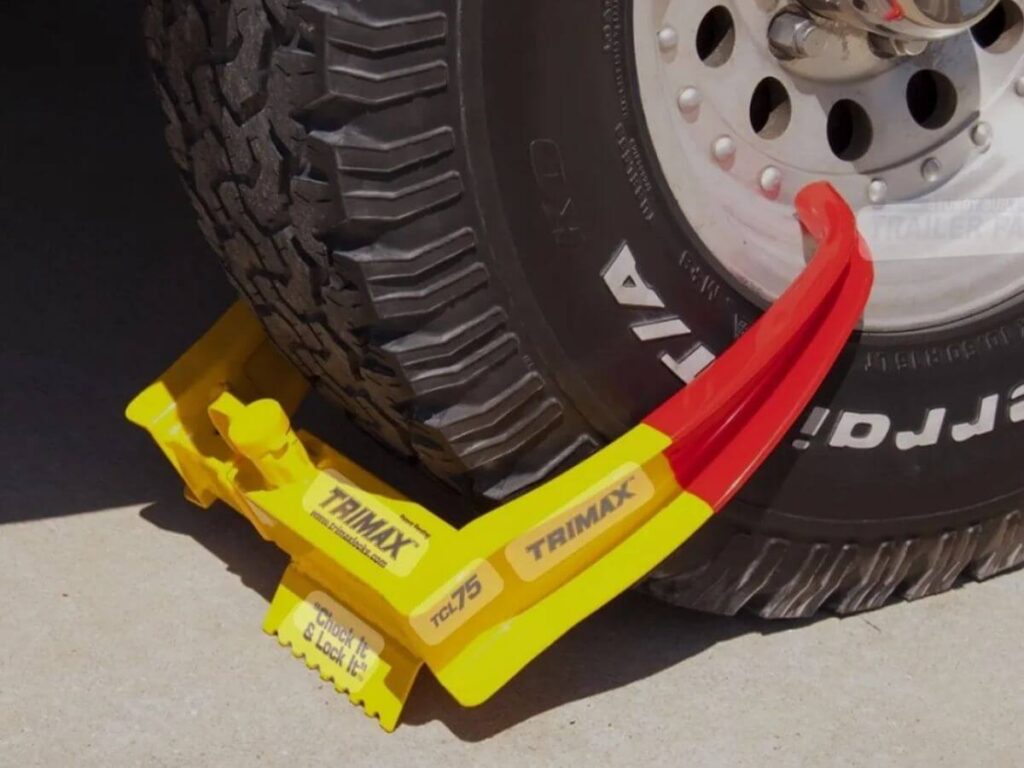
Step #6: Do a Final Walkaround and Lock Check
There was a time when I left a jobsite, thinking everything was secured. Twenty minutes later, I got a call from a crew member who noticed I’d forgotten to latch one of the wheel locks. Luckily, the trailer was still there, but that scare made the walkaround a permanent habit.
How to Do It Right
- Make it part of your shut-down routine. Before leaving a site, do one full loop around the trailer.
- Physically test each lock. Give them a tug, check that they’re latched, and visually inspect for any gaps.
- Use a checklist. Keep a printed or digital list to follow, especially when tired or in a rush.
- Get others involved. If you’re working with a team, assign someone to double-check behind you.
Common Mistakes to Avoid
- Skipping the walkaround because you’re running late
- Trusting that locks were engaged earlier in the day
- Ignoring visual cues like dangling chains or unlocked chocks
A walkaround takes less than two minutes. It’s the easiest habit to build and one of the most valuable in keeping your trailer protected.
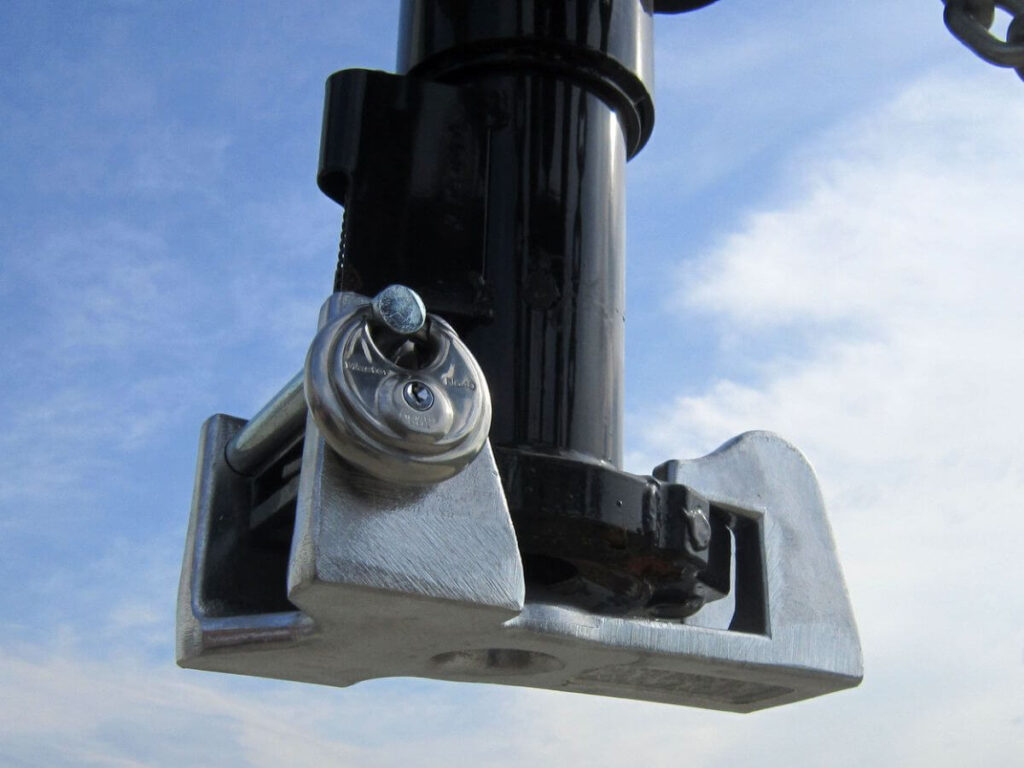
Step #7: Maintain and Replace Locks Regularly
Locks are mechanical tools. Like any equipment, they wear down, rust up, and eventually fail. Ignoring maintenance can leave you with broken security and no warning until it’s too late.
How to Do It Right
- Inspect locks monthly. Look for signs of rust, cracks, loose pins, or any difficulty turning the key.
- Clean with the right products. Use dry graphite lubricant or silicone spray—oil-based products attract grime and accelerate damage.
- Protect them from weather. Cover locks with caps or wrap them in plastic if parked long-term outdoors.
- Replace worn locks proactively. If a lock jams or resists turning, it’s time for a new one.
- Keep spares in your truck. Store an extra coupler lock, padlock, and wheel lock in your toolbox in case one fails unexpectedly.
Common Mistakes to Avoid
- Waiting until a lock fails completely before replacing it
- Using WD-40 or grease inside keyholes (they trap dust)
- Leaving trailer locks exposed to salt, snow, or rain for months
A quality lock can last years, but only if you take care of it. It’s a small effort with a big payoff when it keeps your trailer protected day after day.
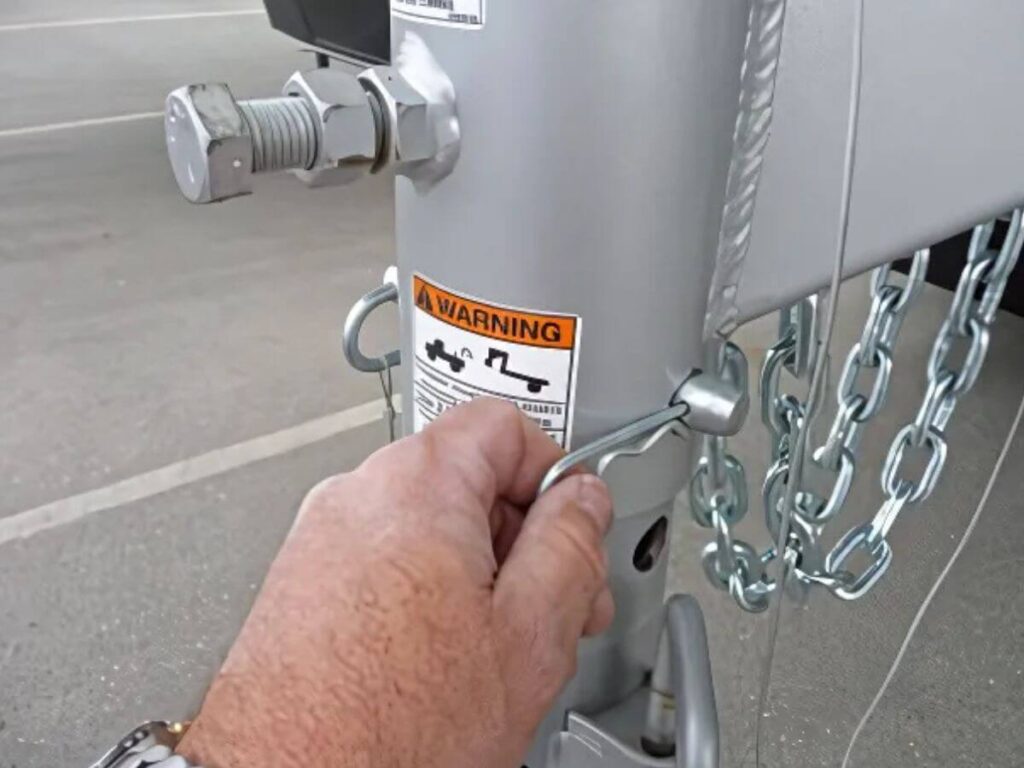
Conclusion
From smart parking to layered locks, you’ve seen what works.
You’ve read how, when, and why to secure every part of your gooseneck trailer.
This isn’t just about safety, it’s about protecting what keeps your business running.
Take what you’ve learned here and put it into practice today.
Contact Rhinotrail today for custom-built, secure trailers that keep your work moving forward.


